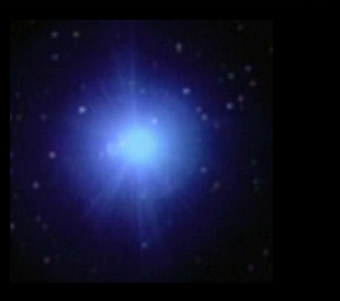
A neutron star is a very small, dense star composed
largely of neutrons, formed from the gravitational collapse of a star's
core left from a supernova. Some neutron stars, called pulsars, emit
beams of electromagnetic radiation from their poles. In the Star Trek:
Enterprise episode "Civilization", the Enterprise NX-01 detected an
unusual cluster of three neutron stars. In the episode "In a Mirror,
Darkly", the Tholians in the mirror universe detonated a tricobalt
device within the gravity well of a neutron star to create a rift
connected to the universe of 2268. In the "Star Trek: The Next
Generation" episode "Imaginary Friend", the USS Enterprise-D
investigated FGC 47 - a nebula formed around a neutron star.
Such stars are composed almost entirely of neutrons,
which are subatomic particles with zero electrical charge and roughly
the same mass as protons. Neutron stars are very hot and are supported
against further collapse because of the Pauli exclusion principle that
requires that no two neutrons can occupy the same quantum state
simultaneously.
A typical neutron star has a mass between 1.4 to 3 solar
masses, with a corresponding radius of about 12 km. In contrast, the
Sun's radius is about 600,000 times larger. The result is a
gravitational field at the surface of a neutron star about 70 billion
times stronger than that on Earth. Strangely, the higher the mass of a
neutron star, the smaller its radius (gravity pulling the contents in
ever more tightly).
The star's collapsing middle layers rebound against the
newly-formed solid neutron core. This generates a shock wave which
heats and blows off the surface layers as a Type II supernova
explosion. Left behind is a rapidly spinning neutron star which has a
strong magnetic field with poles that are usually aligned with the
pole's of the star's rotation. Two oppositely directed beams of radio
waves escape from the poles and sweep around like a lighthouse beam,
producing a series of regular radio blips that can be detected from
Earth. The result is a pulsar.
|
